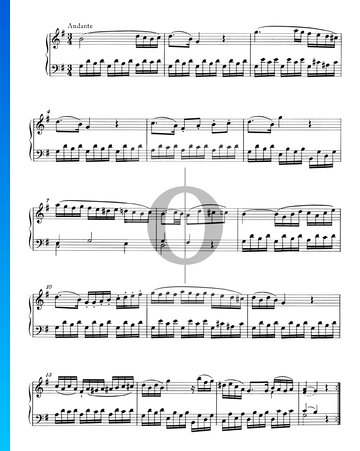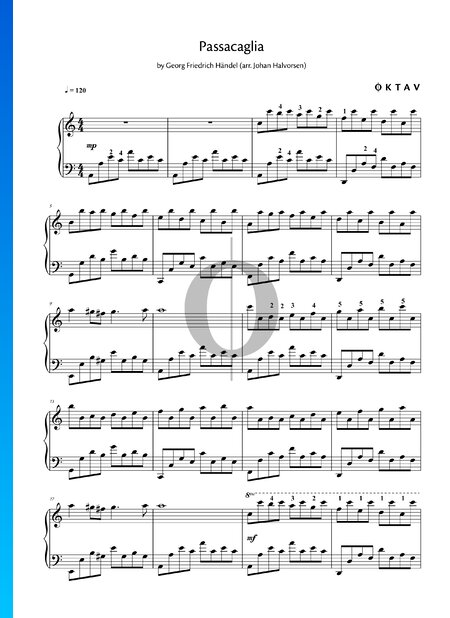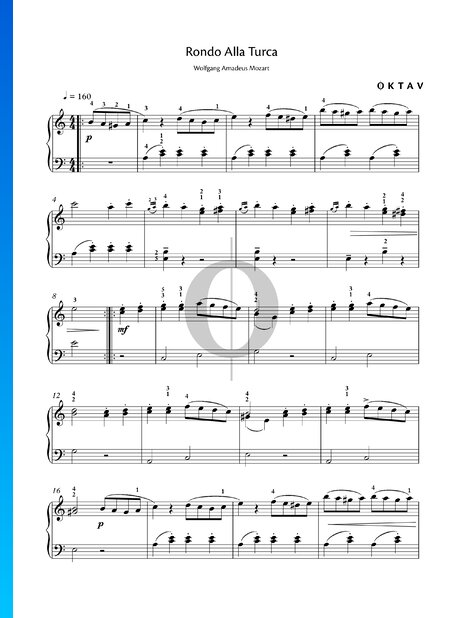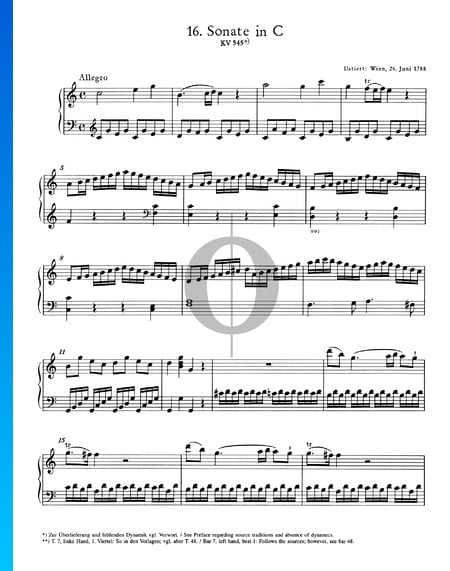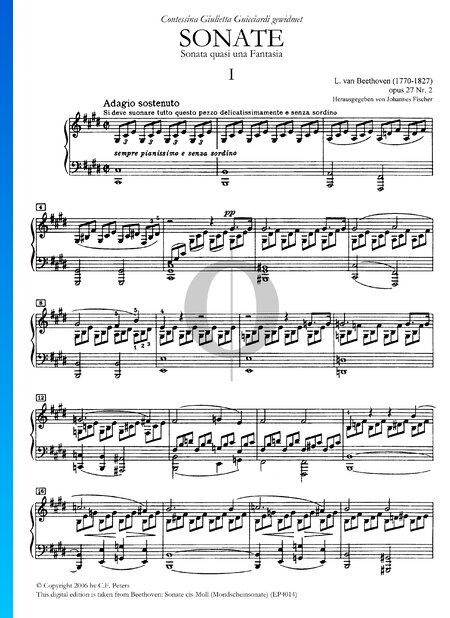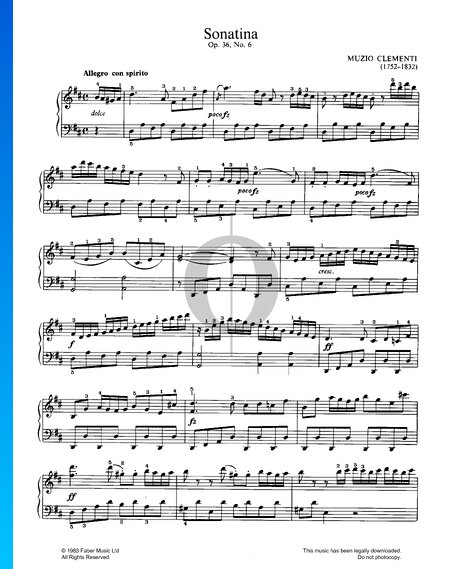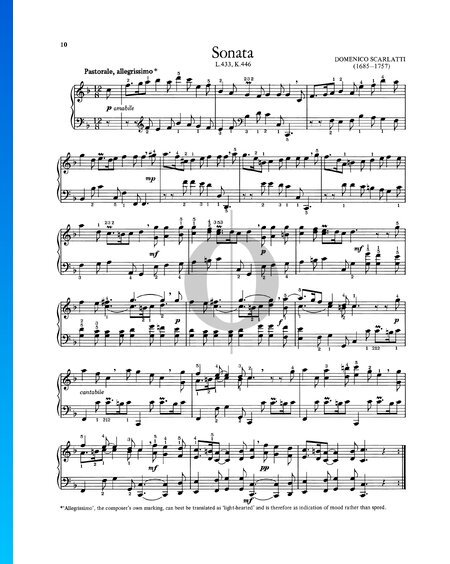Piano Sonata No. 16 in C Major, KV 545: 2. Andante is the second movement of the famous 16th Piano Sonata by Wolfgang Amadeus Mozart. Composed in 1788, this piece is often referred to as Sonata facile or Sonata semplice - which mean the easy or simple sonata. Despite its apparent simplicity, it shows Mozart's skill in expressing depth, moving through a series of emotions while requiring technical precision and clarity.
- The piece is structured in the form of a sonata, featuring three main parts - the exposition, the development, and the recapitulation. It is played in a moderate pace Andante.
- Mozart wrote it in the key of G Major. The tonal shift to G major from the first movement’s C Major contributes to the serene, calm nature of the Andante movement.
- The melody is characterized by its gracefulness and lyrical beauty. It explores a range of dynamics, requiring control and expressivity from the player.
- The piece is primarily marked by a light, elegant touch and a sense of playfulness balanced by moments of tender expression.
This Sonata is a perfect example of Mozart's capability to compose a piece of music that is both accessible for early-stage musicians and satisfying for seasoned piano players. Often playing the Andante second movement provides a contrast to the lively and bright character of the first movement, creating a well-rounded experience of versatility within the composition.
For piano players seeking to master this piece, we have an intermediate version of the sheet music available on our site. After purchasing, you can easily download the sheet music and start enjoying this beautiful sonata by one of the world's greatest composers, Mozart.
 Suite No. 7 in G Minor, HWV 432: PassacagliaClassical
Suite No. 7 in G Minor, HWV 432: PassacagliaClassical Piano Sonata No. 11 A Major, KV 331 (300i): 3. Allegretto - Rondo "Alla Turca"Classical
Piano Sonata No. 11 A Major, KV 331 (300i): 3. Allegretto - Rondo "Alla Turca"Classical Piano Sonata No. 16 C Major, KV 545: 1. AllegroClassical
Piano Sonata No. 16 C Major, KV 545: 1. AllegroClassical Sonata quasi una Fantasia ("Moonlight Sonata"), Op. 27 No. 2: No. 1 AdagioClassical
Sonata quasi una Fantasia ("Moonlight Sonata"), Op. 27 No. 2: No. 1 AdagioClassical Sonatina in D Major, Op. 36 No. 6Classical
Sonatina in D Major, Op. 36 No. 6Classical Sonata Pastorale in F Major, K. 446Classical
Sonata Pastorale in F Major, K. 446Classical